
11 toothpicks in the 5th figure
13 toothpicks in the 6th figure
What earnings will produce $225 in savings?
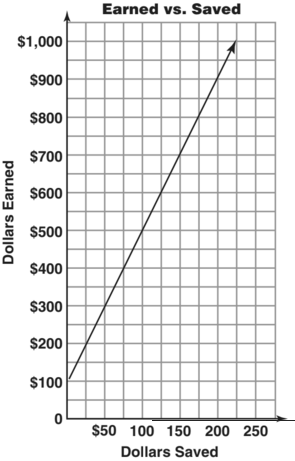
$1000
Carl wants to save $1,000 for a trip.
Suppose he saves $10 per week. How many weeks will it take?
How many weeks at $20 per week?
How many weeks at $30 per week?
100 weeks
50 weeks
33 1/3 weeks (or 34 weeks)
Describe in words the relationship between age and the number of hours of sleep needed to feel rested.
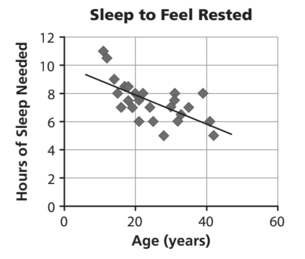
The number of hours of sleep needed to feel rested decreases as age increases.
Solve the equation.
7x - 8 = 3x +12
x = 5

Write an equation for the number of toothpicks t needed to make the nth figure.
t = 2n + 1
How much is saved from earnings of $400?
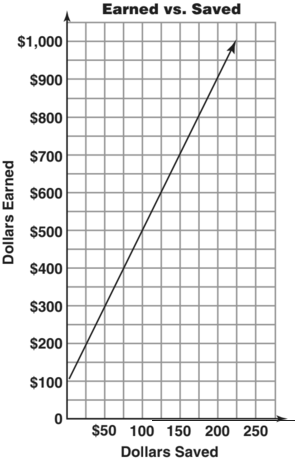
$75
Complete this table and then draw a graph to show the data.

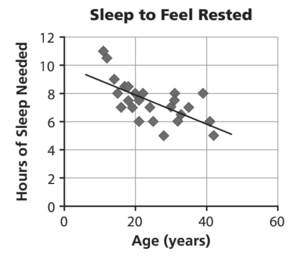
Estimate a correlation coefficient for the data. Is it closest to –1, –0.5, 0, 0.5, or 1?
Explain your choice.
-0.5
There is a negative correlation because the slope of the line is negative.
The data values appear linear but are not very close to the line, so the correlation is not very strong.
Solve the equation:
4 = 0.4(3d - 5)
d = 5

Identify and describe the figure in this pattern that can be made with exactly 61 toothpicks.
Figure 30 can be made with exactly 61 toothpicks.
What is the slope of the line in the graph?
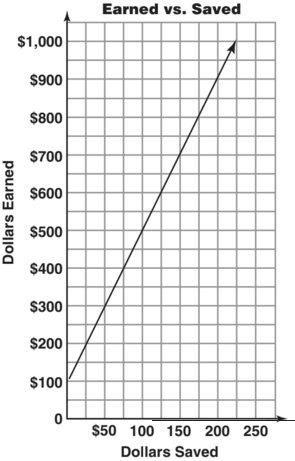
4

Write an equation showing the relationship between the amount a saved per week and the number of weeks n.
an = 1,000
n = 1000 / a
a = 1000 / n
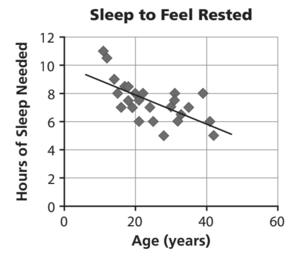
Can the model line be used to predict the number of hours of sleep needed by a person who is 80 years old? Explain your reasoning.
No; the trend is probably not valid for higher ages, because if the trend continues, at a certain age people would no longer need to sleep at all.
Write an equation for the line that meets the given conditions:
A line with slope of 3/2 that passes through the point (–2, 0).
y = 3/2 x + 3

Describe the pattern in words.
As the figure number increases by 1, the number of toothpicks increases by 2.
For each increase of $200 in earnings, what is the increase in savings?
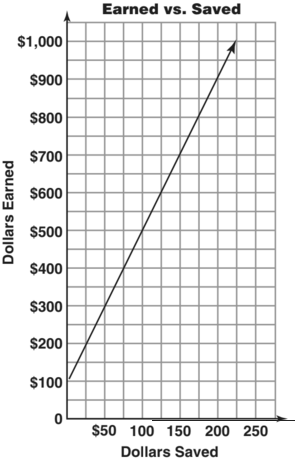
$50

What are the changes in the number of weeks needed to reach $1,000 when the amount saved per week changes from:
i. $10 to $20
ii. $20 to $30
iii. $30 to $40
How does this show the relationship between amount saved per week and number of weeks is not linear?
i. 50 fewer weeks
ii. 16 fewer weeks
iii. 8 fewer weeks
The change in amount saved is constant, but the change in number of weeks is not constant, so the relationship is not linear.
Order the graphs from weakest correlation to strongest correlation.

C, D, B, A
Write an equation for the line that meets the given conditions:
A line that passes through the points (2, 7) and (6, 15)
y = 2x + 3

Is the pattern linear or not linear? Explain.
Linear, because the rate of change in the figures increase at a constant rate of 2 toothpicks.
Write an equation for the linear function.
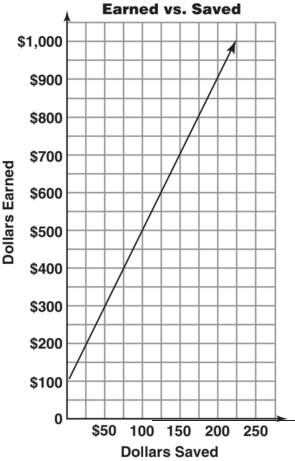
e = 4s + 100
What would be an equation for the relationship shown on the graph?
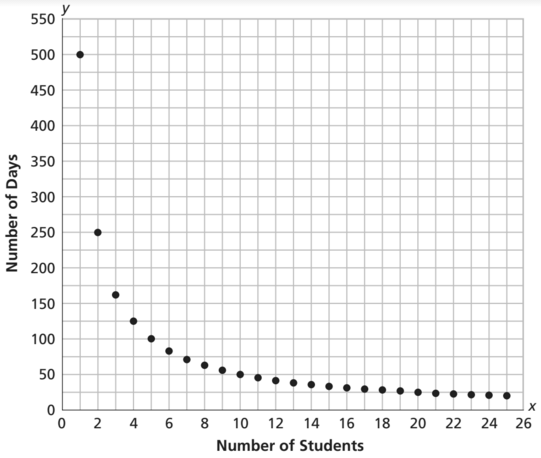
d = 500 / s
Estimate the correlation coefficient of each graph. (Assume all graphs are scaled the same.)

Sample answers:
A: 0.98;
B: –0.85;
C: 0.15;
D: –0.8
On your graphing calculator, set your window to show x and y values from 0 to 10 with a scale of 1.
Graph the equations y = 10/x and y = 10x for x values from 1 to 10.
At what point do the two graphs intersect?
The graphs intersect at the point (1, 10).